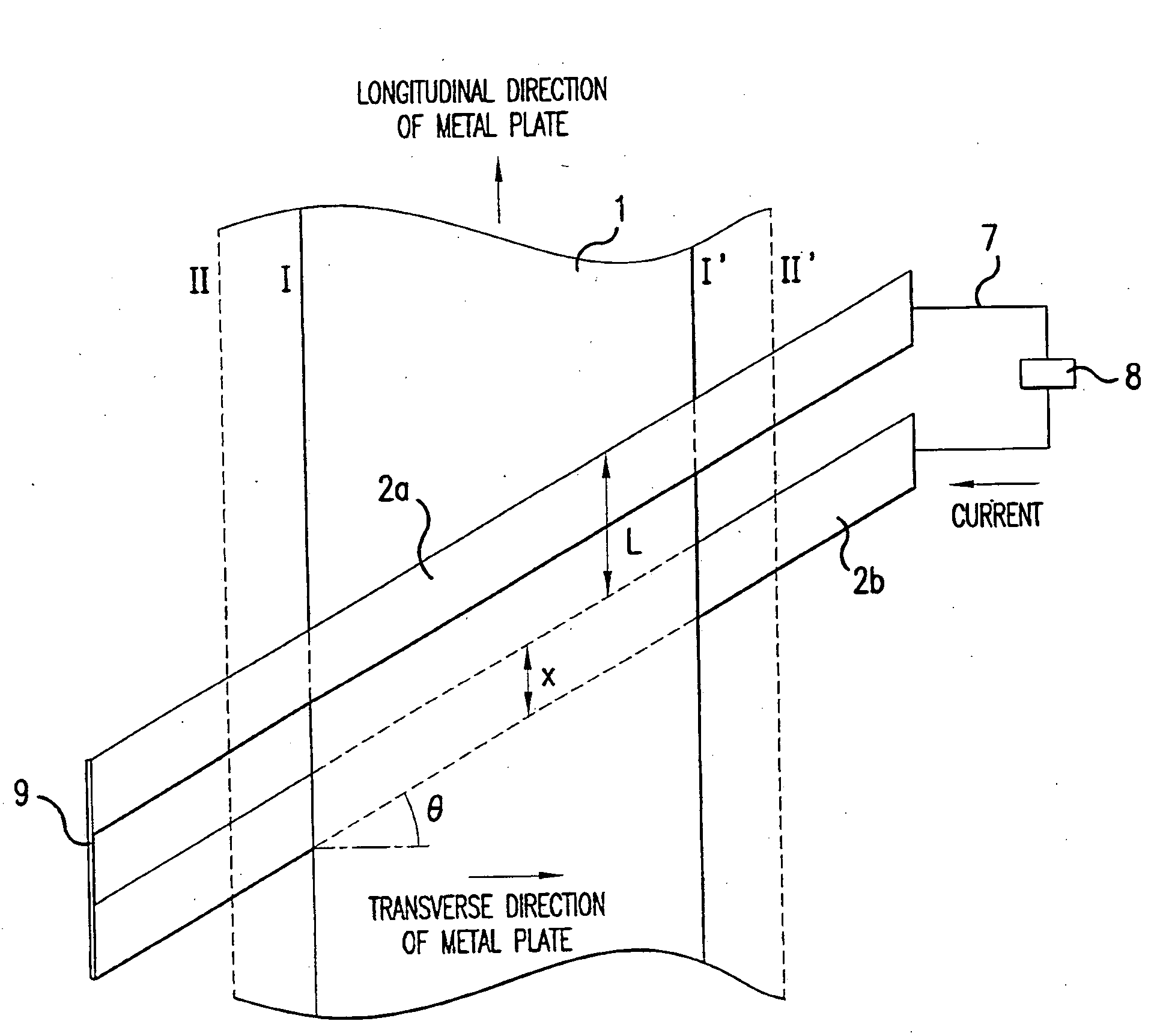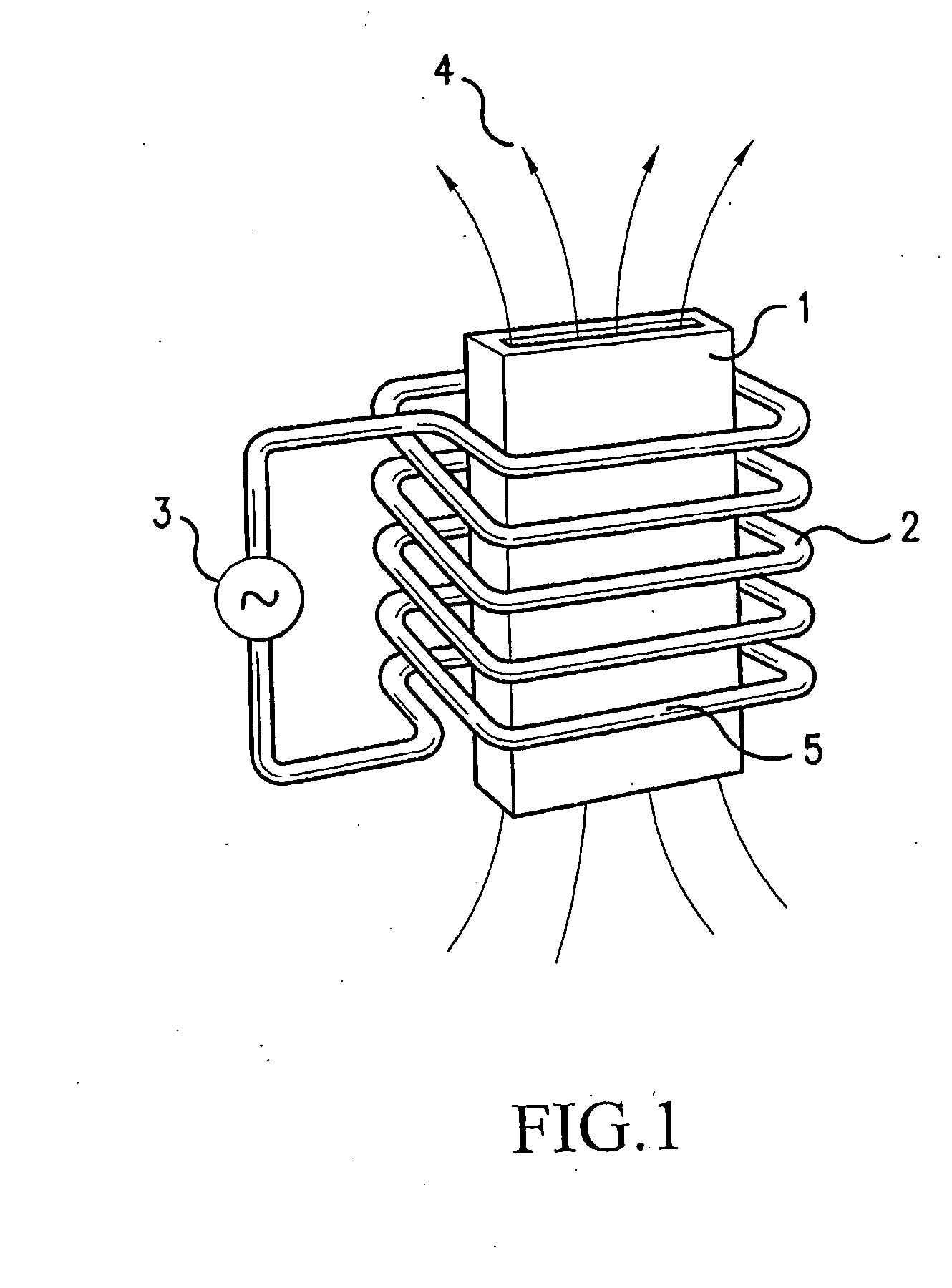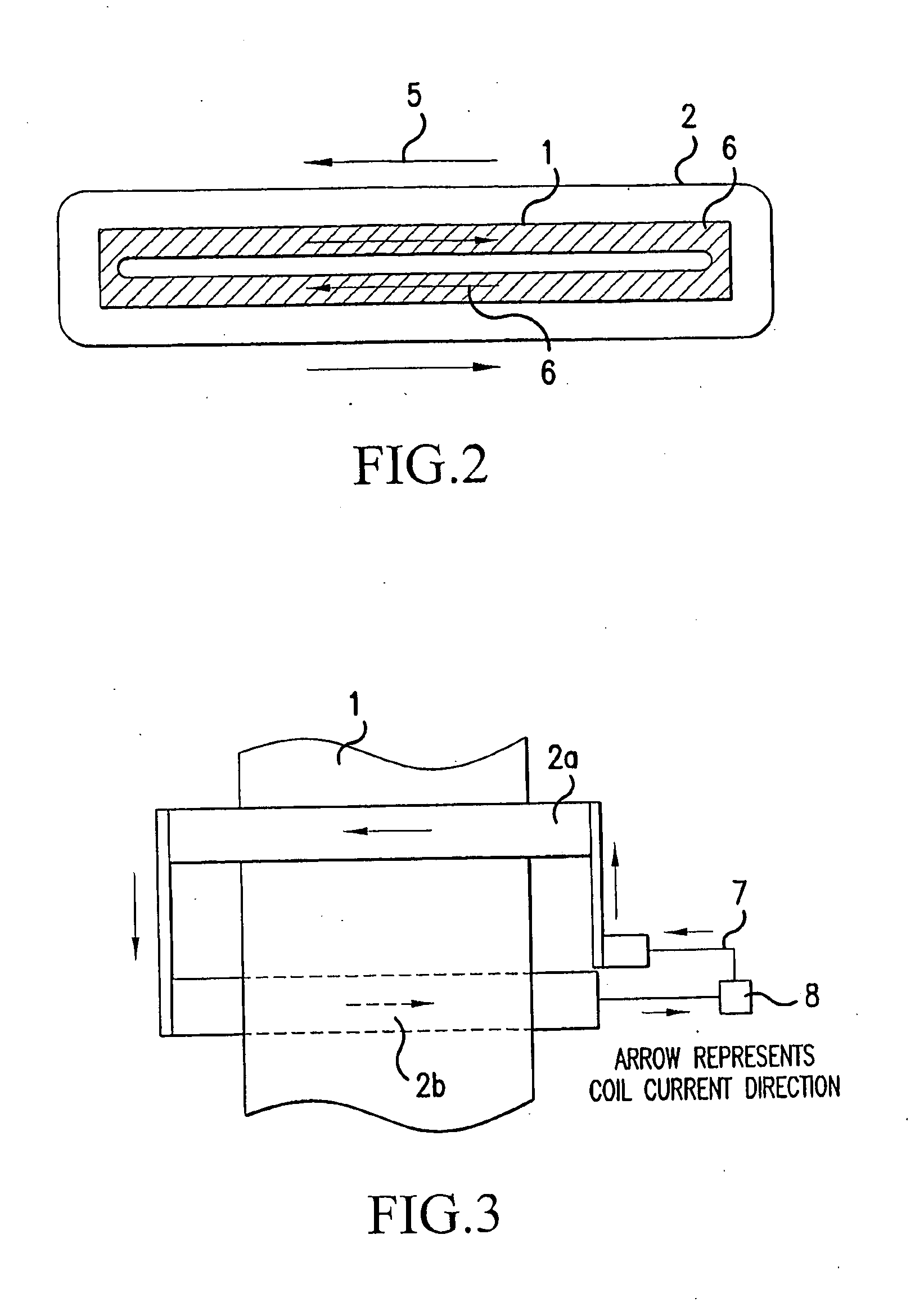Induction Heating Device for a Metal Plate
a technology of induction heating and metal plates, applied in the direction of electric/magnetic/electromagnetic heating, coil arrangement, coating, etc., can solve the problems of difficult to carry out the technology on industrial scale, difficult to provide uniform heating, and non-uniform temperature distribution in the lateral direction, so as to achieve low specific resistance, prevent overheating, and high efficiency
- Summary
- Abstract
- Description
- Claims
- Application Information
AI Technical Summary
Benefits of technology
Problems solved by technology
Method used
Image
Examples
Embodiment Construction
[0043]The present invention will now be described with reference to the accompanying drawings. All of the drawings illustrate a single turn of the induction coil surrounding a metal plate. However, the number of turns of the induction coil in the present invention is not limited to a specific number.
[0044]FIG. 6 is a plan view schematic diagram of an example of an induction heating apparatus of the present invention. In the present invention, an induction coil 2a located above the metal plate and another induction coil 2b located below the metal plate are located so as to be away from each other in the longitudinal direction of the metal plate and parallel to each other. A distance between the upper induction coil and the lower induction coil is defined as a distance between the two projected images of the upper induction coil and the lower induction coil, which are respectively formed by vertically projecting each induction coil onto the metal plate. A distance L, the above-defined...
PUM
| Property | Measurement | Unit |
|---|---|---|
| oblique angle | aaaaa | aaaaa |
| distance | aaaaa | aaaaa |
| area | aaaaa | aaaaa |
Abstract
Description
Claims
Application Information
 Login to View More
Login to View More - R&D
- Intellectual Property
- Life Sciences
- Materials
- Tech Scout
- Unparalleled Data Quality
- Higher Quality Content
- 60% Fewer Hallucinations
Browse by: Latest US Patents, China's latest patents, Technical Efficacy Thesaurus, Application Domain, Technology Topic, Popular Technical Reports.
© 2025 PatSnap. All rights reserved.Legal|Privacy policy|Modern Slavery Act Transparency Statement|Sitemap|About US| Contact US: help@patsnap.com



